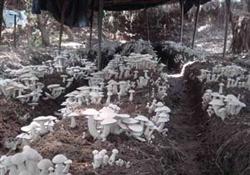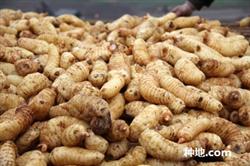How can planting Agaricus bisporus in greenhouse produce high yield?

How can planting Agaricus bisporus in greenhouse produce high yield? Please guide Agaricus bisporus is the earliest cultivated, largest area and most productive global edible fungus in the world. Agaricus bisporus is fleshy, tender, nutritious and delicious. At the same time, Agaricus bisporus is a more exported agricultural by-product. -- preparing materials 1. Raw materials and proportions. Rice straw 35 kg, cow dung 11.5 kg, urea 0.35 kg, calcium superphosphate 11.5 kg, lime 1 kg; late rice straw 43 kg, vegetable cake 2.85 kg, urea 0.6 kg, ammonium bicarbonate 0.20 kg, gypsum powder 1.45 kg, lime 1.05 kg. 2. Area and material quantity. The materials for building a greenhouse of 1000 square meters are 12500 kg of rice straw, 4000 kg of cow dung, 4000 kg of superphosphate, 120 kg of urea and 350 kg of lime. In order to increase the yield, the culture material must be fermented and heated after entering the shed (also known as post-fermentation). 1. The process of composting and fermentation (called pre-fermentation): washing grass (pre-wetting of raw materials) → building and → turning. Wash the grass-shake the grass, continuously pour water into the haystack, wet the grass thoroughly, fake the pile for 2-4 days, and often pour or splash water into the pile to achieve the purpose of pre-wetting. When building a pile, it should be heightened layer by layer in the order of rice straw followed by cow dung (or cake), with a width of 1.6-2 meters and a height of 1.6-1.8 meters. The length of the pile depends on the site. After the pile is built, a small amount of water should seep out from the pile. The pile should be covered with grass on sunny days and covered with film on rainy days to prevent Rain Water from getting drenched, and lift the film to ventilate in time after rain. The turn-over should be carried out when the temperature in the reactor reaches the highest first and then begins to drop. The whole stacking process was turned three times: according to the number of days of 5-4-3: during the first turn, the remaining 50% urea, compound fertilizer and calcium superphosphate were added, and all the gypsum was added; the second turn was carried out 4 days after the first turn, and 45% of the total lime was added at the same time; the third turn was carried out 3 days after the second turn. 2. Enter the shed and disinfect (called post-fermentation). After fermentation, the pre-fermentation culture material was transferred into the mushroom room, stacked on the shelf, and heated in the greenhouse with carbon furnace or steam. After 1-2 days, the temperature in the greenhouse rose to 57-60 ℃, maintained for 10 hours, and then decreased to 48-52 ℃. It was called post-fermentation for 3-4 days. Click to get more mushroom planting techniques click to get more edible mushroom cultivation techniques
- Prev

How to grow high-temperature mushrooms?
How to grow high-temperature mushrooms? Please guide high-temperature mushrooms, also known as big fat mushrooms, high-temperature mushrooms, double-ring mushrooms, which is different from double-spore mushrooms in classification. High temperature mushroom has the following characteristics: first, it has stronger adaptability and heat resistance than Agaricus bisporus, and the temperature of mycelial growth is 5 ℃ higher than that of Agaricus bisporus.
- Next

What is the character degradation of Gastrodia elata?
What is the character degradation of Gastrodia elata? The performance of hemp character degradation is that the yield of arrow hemp decreases, the individual becomes smaller and slender; the yield of rice flax and white hemp decreases greatly, ginger or light brown, the stress resistance is poor, and the original yield and characters can not be fully reflected. The reasons are generally as follows: 1. Multigenerational asexual reproduction.
Related
- Fuxing push coffee new agricultural production and marketing class: lack of small-scale processing plants
- Jujube rice field leisure farm deep ploughing Yilan for five years to create a space for organic food and play
- Nongyu Farm-A trial of organic papaya for brave women with advanced technology
- Four points for attention in the prevention and control of diseases and insect pests of edible fungi
- How to add nutrient solution to Edible Fungi
- Is there any good way to control edible fungus mites?
- Open Inoculation Technology of Edible Fungi
- Is there any clever way to use fertilizer for edible fungus in winter?
- What agents are used to kill the pathogens of edible fungi in the mushroom shed?
- Rapid drying of Edible Fungi

